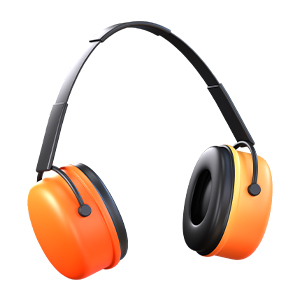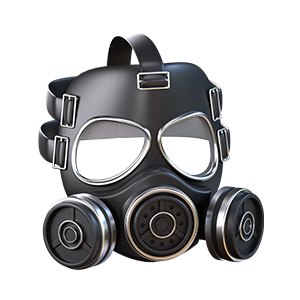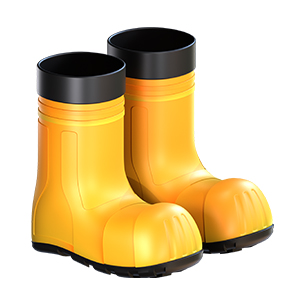When it comes to types of PPE for workplace safety, nothing is more important than protecting yourself from potential hazards. Whether you're working in construction, healthcare, manufacturing, or industries like glass and metal handling, Personal Protective Equipment (PPE) serves as a crucial safeguard. PPE minimises the risk of injuries and health issues caused by exposure to dangerous substances, sharp objects, or heavy machinery.
But PPE isn’t just a one-size-fits-all solution. From cut resistant clothing to respirators and eye protection, understanding which types of PPE are best suited for different jobs is key to ensuring maximum safety. In this guide, we’ll explore the different types of PPE you should consider in high-risk environments and explain why they’re so vital for workplace protection.
Cut Resistant Clothing

For industries where workers are exposed to sharp objects or cutting tools, wearing cut resistant clothing is essential. This is especially true in the glass and metal industries, where lacerations are a constant risk. CutPRO® Cut Resistant Clothing is specifically designed to protect against these injuries while offering flexibility and comfort.
According to the HSE, 17% of all non-fatal workplace injuries were caused by ‘handling, lifting or carrying’.
In glass handling, where workers are dealing with large sheets of glass that can easily break, wearing cut resistant jackets or trousers helps prevent severe injuries. In the metal industry, cutting, grinding, or handling sheet metal requires similar protection.
While cut resistant gloves are common, don’t forget the importance of body protection. In high-risk sectors, wearing cut resistant clothing can reduce injuries, making it easier for workers to perform their tasks confidently and safely.
Head Protection
 One of the most common and effective types of PPE is head protection. For workers in environments where there's a risk of falling debris or tools, wearing a helmet can prevent serious head trauma. Safety helmets or hard hats are a must in construction sites, building repairs, and excavation work.
One of the most common and effective types of PPE is head protection. For workers in environments where there's a risk of falling debris or tools, wearing a helmet can prevent serious head trauma. Safety helmets or hard hats are a must in construction sites, building repairs, and excavation work.
Key features of good head protection include:
- Shock absorption to prevent injuries from falling objects.
- Comfortable fit for long working hours.
- Heat resistance, especially in industries exposed to extreme temperatures.
Whether you’re working in tunnels, excavations, or overhead construction, a reliable helmet can make all the difference.
Eye and Face Protection
 Your eyes are one of your most sensitive assets, and in industries like glass manufacturing or metalworking, they’re especially vulnerable to injury. In 2020, there were 18,510 eye-related injuries and illnesses in the U.S. that resulted in at least one day away from work. This translates to an incidence rate of 1.7 cases per 10,000 full-time workers. The majority of these injuries - around 11,980 cases - were caused by contact with objects or equipment, with 59.6% resulting from foreign matter in the eye and 35.6% caused by the eye being struck by an object, many of which are preventable with the proper eye protection.
Your eyes are one of your most sensitive assets, and in industries like glass manufacturing or metalworking, they’re especially vulnerable to injury. In 2020, there were 18,510 eye-related injuries and illnesses in the U.S. that resulted in at least one day away from work. This translates to an incidence rate of 1.7 cases per 10,000 full-time workers. The majority of these injuries - around 11,980 cases - were caused by contact with objects or equipment, with 59.6% resulting from foreign matter in the eye and 35.6% caused by the eye being struck by an object, many of which are preventable with the proper eye protection.
Here are some common types of PPE for eye and face protection:
- Safety goggles: Ideal for protection against flying debris and chemical splashes.
- Face shields: These provide broader protection for the entire face and are essential in environments where splashes or flying objects are frequent, such as during welding or chemical handling.
- Safety glasses: For more general protection, safety glasses with side shields protect against smaller particles and debris.
In the glass industry, wearing safety goggles can prevent injuries from shards or flying glass particles during cutting or transportation.
Hearing Protection
 In noisy environments like construction sites or manufacturing plants, prolonged exposure to loud sounds can cause irreversible hearing loss. According to the Control of Noise at Work Regulations, workers should use hearing protection when exposed to noise levels above 85 decibels (dB). Hearing protection includes earplugs and earmuffs, both of which help to reduce the risk of noise-induced hearing loss.
In noisy environments like construction sites or manufacturing plants, prolonged exposure to loud sounds can cause irreversible hearing loss. According to the Control of Noise at Work Regulations, workers should use hearing protection when exposed to noise levels above 85 decibels (dB). Hearing protection includes earplugs and earmuffs, both of which help to reduce the risk of noise-induced hearing loss.
Earmuffs are popular on the shop floor, while earplugs offer a more comfortable option for those working long hours in noisy environments. Industries like metalworking, where grinding and machinery are often loud, must prioritise hearing protection for workers.
Respiratory Protection
 Respiratory illnesses are a serious issue in workplaces that expose workers to dust, fumes, or harmful gases. In fact, the HSE reports that respiratory illnesses account for nearly 12,000 deaths annually in the UK. Respirators and masks are essential PPE for anyone working in environments with airborne hazards.
Respiratory illnesses are a serious issue in workplaces that expose workers to dust, fumes, or harmful gases. In fact, the HSE reports that respiratory illnesses account for nearly 12,000 deaths annually in the UK. Respirators and masks are essential PPE for anyone working in environments with airborne hazards.
Types of respiratory protection include:
- Dust masks: For filtering out dust and other small particles.
- Full-face respirators: Provide comprehensive protection in environments with high levels of toxic vapours or fumes.
- Supplied-air respirators: For hazardous environments like chemical processing, these supply clean air from an external source.
Wearing respiratory protection is crucial for workers in welding, spray painting, and chemical handling, where inhaling hazardous particles can lead to long-term health issues.
Foot Protection
 In industries where heavy objects may fall or where slippery surfaces are common, foot protection is vital. Steel toe boots and slip resistant shoes protect workers from crush injuries, which are a leading cause of workplace accidents. According to the HSE, slips and trips account for 32% of all workplace injuries, many of which are avoidable with the right footwear.
In industries where heavy objects may fall or where slippery surfaces are common, foot protection is vital. Steel toe boots and slip resistant shoes protect workers from crush injuries, which are a leading cause of workplace accidents. According to the HSE, slips and trips account for 32% of all workplace injuries, many of which are avoidable with the right footwear.
Safety boots come with features like:
- Steel toes for impact protection.
- Slip-resistant soles for increased traction.
- Insulation for extreme temperature environments.
Workers in industries like construction and demolition should never skip this essential form of protection.
Why PPE is the last line of defence
It’s important to remember that while PPE plays a critical role in preventing injuries, it should not be the only safety measure in place. PPE is considered the last line of defence when other safety controls, such as engineering measures or procedural changes, can’t eliminate the hazard entirely. That’s why PPE is crucial in high-risk sectors where removing the danger is not an option.
CutPRO®’s Cut Resistant Clothing helps minimise injuries in industries like glass and metalworking, where handling sharp materials is unavoidable. Additionally, proper training and maintenance of PPE are vital to ensure that it continues to offer the necessary protection.
The importance of choosing the right type of PPE
Choosing the correct types of PPE for your specific job is a critical part of ensuring workplace safety. From cut resistant clothing to safety helmets and respirators, each type of PPE serves a unique purpose in reducing the risk of injury. For industries like glass and metal manufacturing, where the dangers are high, investing in high-quality PPE like CutPRO®’s Cut Resistant Clothing can make all the difference.
To keep your team safe, make sure they’re equipped with the right tools to do the job safely. If you want to explore our full range of protective clothing or learn more about how we can help you build a safer workplace, visit here.
About the Author
If you’ve enjoyed this article, you may be interested in learning more about the work we do at CutPRO®. Robert Kaiser, our company’s Founder & CEO, is a globally respected expert in combating and mitigating violence, as well as risk management. He is also a gender-based violence specialist and the author of NEVER A VICTIM – The Definitive Guide to Women’s Safety, written after three decades of research. His recent articles include The Best Personal Safety Tips for Women.



